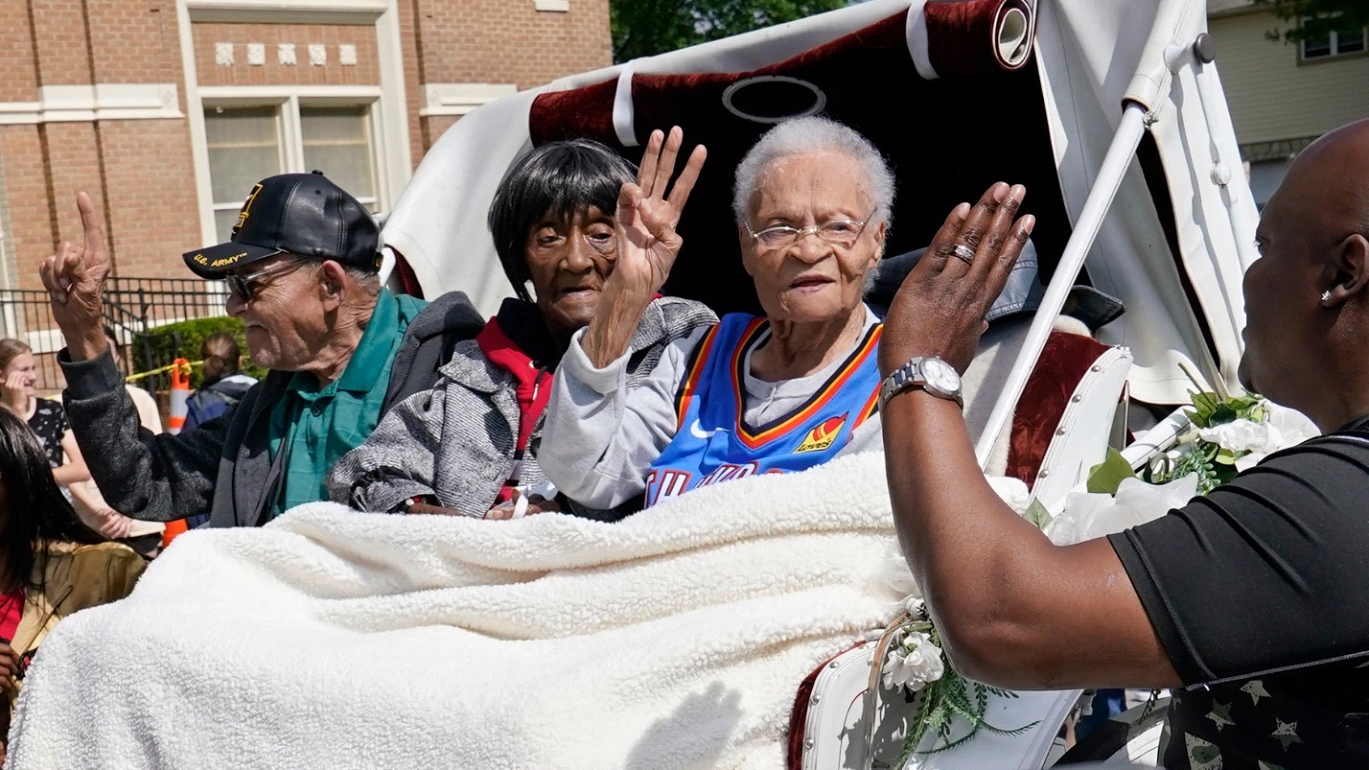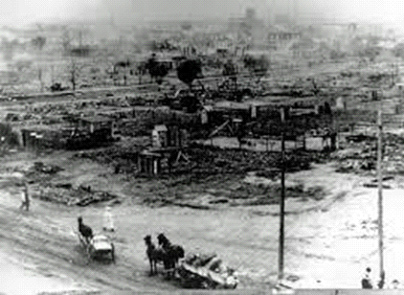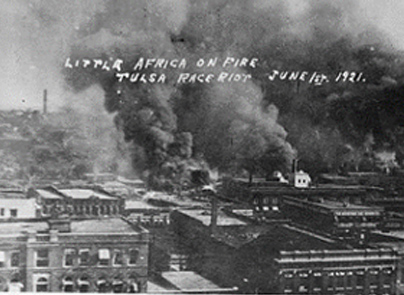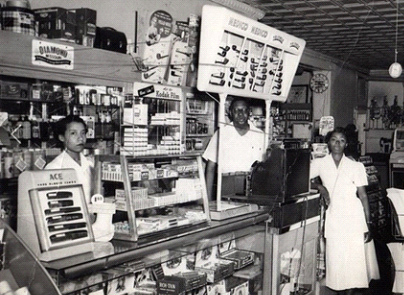
Tulsa – Where do we want to be in the next 100 years?
On the 30th May 1921 the black self-made community of Tulsa, Greenwood Oklahoma suffered an 18-hour terrorist attack causing death, destruction and murder, with defenseless women and children running for their lives and away from smoke filled streets, never to be forgotten. What have we learned 100 years later?
The Tulsa Massacre experienced the first terrorist air attack over America, from America, on African American people. With shooting from all directions, burning of property and livelihood’s, private corporate plane companies dropped bombs from above the innocent heads of the Greenwood community.

Today, the remaining three Tulsa Massacre survivors who are centennials have recently testified before the House Judiciary Committee’s Subcommittee on the Constitution, Civil Rights, and Civil Liberties in a hearing titled ‘Continuing Injustice: The Centennial of the Tulsa-Greenwood Race Massacre.
A vibrant and relevant example of what can be achieved in collective working life. Coined the ‘Black Wall Street’ by Booker T Washington, the working vision was being achieved through thriving entrepreneurial business production and services, all next door and adjacent to one another and all producing from a foundation of social economic prosperity and the agreed responsibilities of raising a family, provision of a school education and community gatherings such as church and events. A picture many over the years of continuing similar attacks and injustices have dreamed and strived toward in America and black people all over this world.

Tulsa, Greenwood built economic status while living under America’s segregated laws;
“An island of prosperity in the seas of racism” An island within a segregated city, state and country”
Whatever version given to justify the racist massacre is not as important and necessary to understand that the attacks were based on ‘justified homicide’; meaning that the strategic interest is to use anything that can be interpreted or used as being wrong or against the law as a predicate to come into black communities to arrest, attack, destroy and kill. Certainly, when we study the economic interests of white European and American history, these tactics are well recorded.
Wherever we live, the eyes and hearts have witnessed imposed laws to ‘help stop’ crime and black on black killing, such as ‘Stop and Search’ to which is proven has no real effect. Services are stretched, nonexistent or unable to provide the needs of those who require help.
What if there were no black-on-black killings? What if communities were building like Tulsa Greenwood and other communities that did the same?
What did the racist attackers, who segregated black people, have in their hearts, as they witnessed black people grow and flourish before their very eyes?
The answer to these questions may be obvious to most of us, however, the invitation is to the question; How we think about, preserve, and secure the right to work freely, with justice and equality.
The Tulsa Greenwood massacre caused 10,000 people to become homeless. Homes and businesses burned to the ground. Today, the land coverage of the district, if generated through families and the community, would be worth between $25-30 million, if not more. The intention of the racist massacre was for the black people of Tulsa Greenwood never to thrive again.
Still under segregated law, Tulsa Greenwood got up!
Within the space of 9 or so years (which is a short period considering the Great loss) the thriving business community was regenerated, co creating more business and wealth than before. That also means, children who survived 30th May 1921 would have lived and been raised to see their parents, families and business community rebuild again.

As integration took place the strategic interest took another position and went into ‘Urban Renewal’ or Regeneration, whereby a bridge was built right through the main business community; with the higher increase of rents and taxes, the breaking up the environmental social economic constructs of Greenwood happened, eventually causing a gradual dispersant of collective prosperity among the black community.
How did this happen again, without the violence, destruction, and murder?
In today’s modern times ‘strategic interest’ is by means of how we think, language, conversation and the use of laws. It appears diverse and considerate of need, yet communities continue to suffer out of poverty, ill-health and poor education, with much of the reason being black people and/or the poor are uncivil and not getting on with one another.
What has replaced the burning fires today? Is ‘Urban Renewal’ or ‘Regeneration’ present where you live? How are you economically represented in your community? Do you see yourself as part of the economic blueprint where you live? Is ‘Urban Renewal/Regeneration’ the new ‘Segregation’?
Why now?
Given the 100-year Remembrance Anniversary of Tulsa, Oklahoma Greenwood and the continuing aim, over many years, to receive Reparations, the question as to why this opportunity has been given attention, so long after it took place, is necessary to consider.
The President of America Joe Biden is reported as the first president to bring the Tulsa Racist Massacre into public light and initiate justice for those gone and remaining survivors. Upon his recent visit to Tulsa, Oklahoma Greenwood he spoke and gave an interesting slant on the Tulsa racist massacre. He said;
“I come here to help fill the silence, because in silence wounds deepen. We moralize what happened here in Tulsa; so it can’t be erased. Mother Fletcher (Tulsa survivor) said when she saw the insurrection at the Capital on January 9th 2021, it broke her heart. A mob of violent white extremists, thugs; said reminded her of what happened here in Greenwood 100 years ago…” He continued, including what he called the “examples of opposing, potential or existing incidents”, referring to:
• “The right to vote
• Restrictive Law
• Lawsuits
• Threats and intimidation
• Vote of purges and more…”
In over 400 years have black people been affected and impacted by the same? And more…?
Is this another ‘strategic interest’ act to prepare for the emergence of white-on-white civil unrest and other emerging wars? Could it be that this wicked terrorist massacre on its 100 year anniversary is being used to get black people on side?
When we place these points firmly in the context of how we work and live, we attempt to encourage conversation in answering the developing questions…
Surely Reparations is also and most significantly extending the inquiry into addressing what is required to secure the healthy working mind and environment, that is reflective of and completes the deep gaping gap of the missed opportunity, to experience the benefit and share the reward of work and prosperous living standards as history, before 400 years and the examples such as Tulsa Greenwood have given us and proved is natural and possible.
Our responsibility today is to re-educate and understand the significance of ‘strategic interest’ in its many forms and ensure the proper positions are taken to secure and protect the genuine common humanitarian care required for reparative regeneration within black communities and everywhere.
If the examination and analysis of Tulsa, George Floyd and the many, many martyr’s of our time is truly and genuinely being corrected, then we should have no problem and indeed the assistance to regenerate new work life for ourselves, without the onslaught of death, thuggery, intimidation and more…
We encourage all who believe and practice understanding of freedom, justice and equality to study the continuing Tulsa Reparations outcome and consider the reality of where you live and how we can co create, use and construct viable working spaces and make our communities decent and safe places to live.
Share your thoughts with us. Join WLFI for our next Event here
Tag:WordPress
